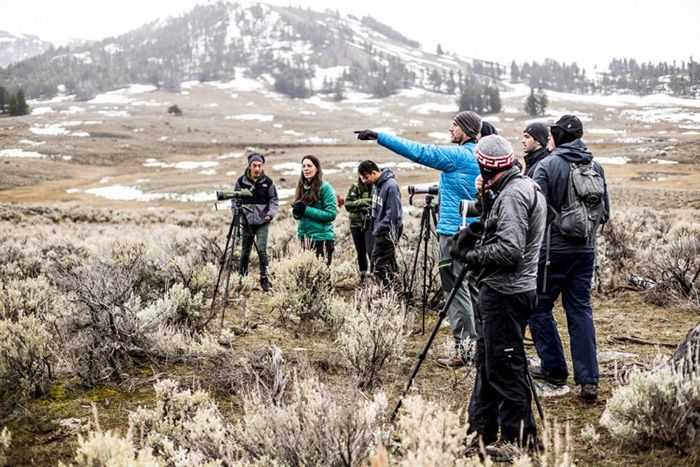
Professor Marzluff and a group of students have pulled over at Blacktail Pond in Yellowstone. Some 150 yards from the road, a grizzly is feasting on the remains of a bison that plunged through thin ice and drowned over the winter — then was dragged out in the spring for an easy meal.
Ravens fight over the scraps of another unfortunate bison nearby, and coyotes lurk as they wait their turn. Marzluff “translates” the ravens’ vocalizations: “That one’s begging. That one’s asserting dominance. That one’s just been pecked.”
The students are in the middle of a bird survey. They’re shuttled every half-mile to make note of how many ravens, magpies, golden eagles and bald eagles they see. They’ve stopped to watch the grizzly, but soon they’ll return to their data quest, adding to a decades-deep database that shows scavenger dispersal throughout the park. It’s valuable information: Scientists can use it to look into where scavengers go, when and why.
It’s in the details
Field science requires true commitment. Students listen intently for crows, jays and magpies, jotting down minute details: temperature, wind strength and cloud cover. It’s arduous and detail-oriented work. Students find this out quickly during the class, gaining key insights about whether or not this is the right career path for them.
Home ● On the Trail of Cougars ● Following Elk, Gathering Data ● Finding Common Ground ● Back Home in Washington ● Through the Eyes of Students